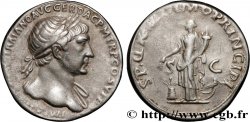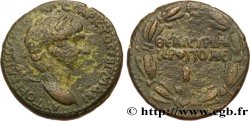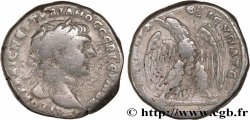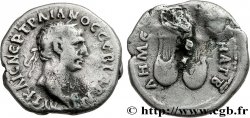v16_0522 - TRAJANUS Tétradrachme syro-phénicien
MONNAIES 16 (2002)
Starting price : 100.00 €
Estimate : 180.00 €
Realised price : 100.00 €
Number of bids : 1
Maximum bid : 117.00 €
Starting price : 100.00 €
Estimate : 180.00 €
Realised price : 100.00 €
Number of bids : 1
Maximum bid : 117.00 €
Type : Tétradrachme syro-phénicien
Date: 111
Mint name / Town : Tyr, Phénicie
Metal : silver
Diameter : 25 mm
Orientation dies : 6 h.
Weight : 13,98 g.
Coments on the condition:
Usure régulière. Bien centré, portrait de Melqart dans la tradition autochtone
Catalogue references :
Predigree :
Cet exemplaire est le 1515_028 de la base TSP
Obverse
Obverse description : Tête laurée de Trajan à droite posée sur un aigle debout à droite ; dans le champ à gauche, une massue posée en oblique.
Obverse legend : AUTOKR KAIS NER TRAIANOS SEB GERM DAK (Autokrator Kaisar Nerua Traianos Sebastos Germanikos Dakikos).
Obverse translation : (L'empereur césar Nerva Trajan auguste germanique dacique).
Reverse
Reverse description : Tête laurée de Melqart (Hercule) à droite, la léonté nouée sur le cou.
Reverse legend : DHMARC/ EX - IE UPATE. (Dhmarcikhs Exousias IE Upatos E).
Reverse translation : (Puissance tribunitienne, An 15, consul pour la cinquième fois).
Commentary
Le portrait de Melqart est, sur ces tétradrachmes, plus ou moins hellénisé. Sur notre exemplaire il est particulièrement massif et brutal, probablement au plus proche de la représentation cultuelle du héros, donnant une image de force physique très impressionnante, particulièrement par le cou massif de lutteur.
Tyr est la principale ville de Phénicie. Le monnayage pour Trajan commença en 98, puis connut une interruption de cinq ans et reprit avec les émissions liées au cinquième consulat (103) avec un style proche des émissions d’Antioche. Michel Prieur fait remarquer qu’il existe une liaison de coins entre les différents types de revers. Il émet l’idée que l’atelier de Tyr aurait frappé pour l’ensemble de la région. Les pièces de l’atelier d’Antioche sont particulièrement rares (PR. 151-153) alors que les émissions pour Tyr sont abondantes (PR. 1477-1522).
Tyr est la principale ville de Phénicie. Le monnayage pour Trajan commença en 98, puis connut une interruption de cinq ans et reprit avec les émissions liées au cinquième consulat (103) avec un style proche des émissions d’Antioche. Michel Prieur fait remarquer qu’il existe une liaison de coins entre les différents types de revers. Il émet l’idée que l’atelier de Tyr aurait frappé pour l’ensemble de la région. Les pièces de l’atelier d’Antioche sont particulièrement rares (PR. 151-153) alors que les émissions pour Tyr sont abondantes (PR. 1477-1522).







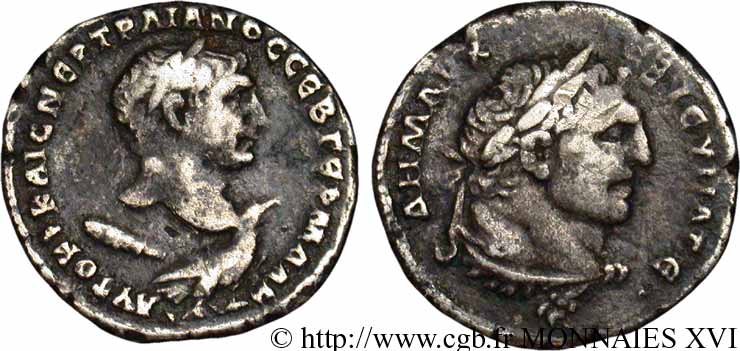
 Report a mistake
Report a mistake Print the page
Print the page Share my selection
Share my selection Ask a question
Ask a question Consign / sell
Consign / sell
 Full data
Full data